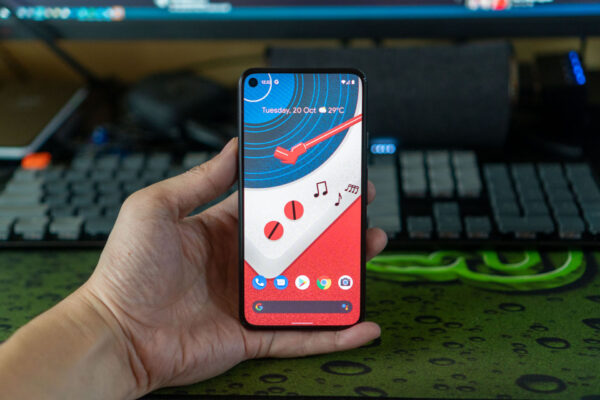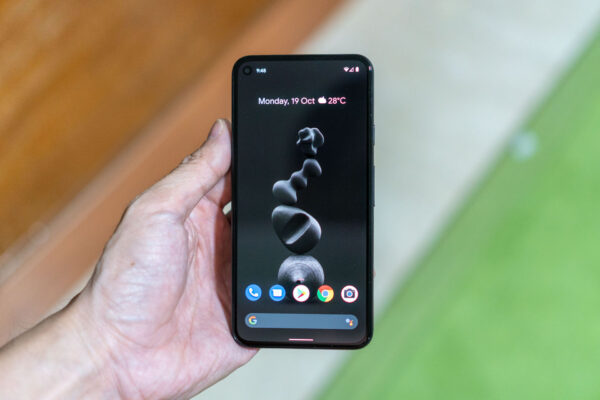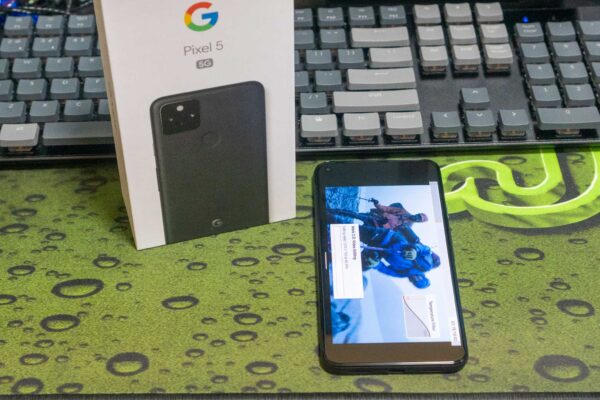
The new Pixel 5 is Google’s 3rd smartphone launch this year. This is their flagship premium smartphone, though in an interesting change of strategy, isn’t priced or have specifications like that of a flagship. I have a quick hands-on experience to share here.
One of the main reasons that the Google Pixel 5 doesn’t get counted in the top-tier premium smartphone category is due to the processor in it. While all the premium flagship Android smartphones this year have a Qualcomm Snapdragon 865 processor, the Pixel 5 makes do with a Snapdragon 765G.
The deliberate choices that Google made with the Pixel 5 puts it in a more affordable price category. Last year’s Pixel 4 launched at US$799 and US$899 for the 64 GB and 128 GB storage versions respectively, and the larger Pixel 4 XL was priced at US$899 and US$999 for the 64 GB and 128 GB storage versions respectively. In comparison, this year’s Pixel 5, which is only available with 128 GB of storage, is priced at US$699.
In some ways, the Pixel 5 is reminiscent of the Nexus 5. Oh, I know, some of us have fond memories of the Nexus 5. It was 2013. Nexus smartphones were affordable. They didn’t need to have the best hardware specifications, but they represent the best of the Android experience.
The Pixel 5 is definitely not about hardware specifications. It will not win that fight. It’s not just that the Snapdragon 765G isn’t considered top-tier, but also that it’s camera hardware is getting dated. The advanced Soli radar sensor from last year is gone. Even the squeezable Active Edge is gone.
Instead, the Pixel 5 is like going back to basics. This isn’t a bad thing. In fact, I’m also quite happy that Google sells only one configuration, colour notwithstanding. The fact that I want a small phone but a big battery has always caused a dilemma — should I get the XL or the non-XL? This year, there’s only the colour to choose. The Pixel 4a and 4a 5G aren’t quite the same thing.
This Pixel 5 is quite a small phone, despite a respectably-sized 6-inch display. The small, uniform, bezels surrounding the screen helps achieve a screen-to-body ratio of 85.9%, lending an awesome all-screen experience on this phone. The small form factor, however, could be a problem for people with large hands to hold the phone comfortably.

The display is an OLED panel with 1080 x 2340 pixel resolution, 19.5:9 aspect ratio, and about 342 PPI density. It supports HDR10+ and 90 Hz refresh rate, the latter being responsible for the ultra-smooth and fluid UI experience. Gorilla Glass 6 on the screen provides one of the best protection.
The minimalist bezels on the Pixel 5 does mean that something has to be sacrificed. Even though there are stereo speakers, none of them are front-facing. That’s right, even the one at the top that you usually hold to your ear during a phone call, it isn’t quite there. Instead, you have an under-screen speaker that vibrates the display panel. The sound is, to be quite blunt, is really bad. There’s almost no bass, and the rest sounds distorted. It is bearable for phone calls.
For watching videos, it will be the other downward firing speaker that pulls most of the weight. It has bass, though overall, still doesn’t really sound that good. However, it is the greatly imbalanced sound production between the two speakers that sound weird and awkward. You should just use a decent pair of headphones. I suppose that’s what Google is counting on people to do, like using the Pixel Buds.
The rest of the Pixel 5 looks quite nondescript, almost boring. Boring can be good, and I don’t mind that at all. The aluminium body is covered by a kind of bio-resin that gives the surface a mildly-textured feel, which I think makes the phone feel a bit plasticky, even though it is aluminium beneath. The glass back from the Pixel 4 feels nicer, but that does carry higher risks of accidental damage. The bio-resin presumably serves to hide cutouts that make it possible for the phone to support NFC and wireless charging. The Pixel 5 also supports reverse wireless charging, so you can use it to charge something else. (I bet Google hopes it’ll be the Pixel Buds.)
There are some changes in the main camera system on the rear of the Pixel 5. The telephoto lens from last year has been swapped with an ultra-wide one with 107° field of view. The main camera is unchanged from last year: 12.2 MP 1/2.55″ 1.4µm dual pixel PDAF sensor, f/1.7 27mm lens, and supports OIS. The sensor itself is the same as back in the Pixel 3 time, so it is getting quite old. The hole-punch selfie camera on the front has a 8 MP sensor with f/2.0 24 mm wide lens.
Google has been quite proud of their computational photography capabilities, using software to take great pictures. All Pixels do take great photos, and the new Pixel 5 is no exception. Extra sensors and lenses will definitely help but it looks like Google won’t run this race. This isn’t a problem for most casual photography and videography purposes. I’ll go into more details on the Pixel 5’s camera abilities in my full review.
Battery life on the Pixel 5 is very good, not unexpected given the huge 4080 mAh battery is paired with a modest Snapdragon 765G processor and not an overly huge display. My test using PCMark 10 ran 848 minutes (14 hr 8 mins), which is the most of any phone I’ve tested. For reference, the Pixel 3a, Pixel 4 XL, and Pixel 4a scored 710 mins, 722 mins, and 787 mins respectively. This means that the Pixel 5 will run all day for most people, and possibly even the 2nd day.

The Pixel 5 has IP68 dust and water resistance, so no worries about dropping the phone into the pool. Google’s idea of dual-SIM is the same as before — the 2nd one is an e-SIM, so you still cannot put in a 2nd physical SIM card. There is also no expandable storage supported. Unlimited original quality Google Photos storage was dropped with the Pixel 4. This is still the case now.
There’s no face unlock. Instead, the Pixel 5 returns to the trusty fingerprint sensor on the back, which is a good thing in the present mask-wearing climate. The Pixel Imprint, as the fingerprint sensor is called, works perfectly.
Finally, though not the least, and this probably isn’t that big a thing for most people, the Pixel 5 supports 5G. This includes both sub6 and mmwave in the U.S., but only sub6 in the rest of the world. Most people aren’t ready or going to need 5G yet, but good to know this phone is ready when you eventually get to use 5G.
Concluding Thoughts
The Google Pixel 5 refocuses on features that are important, the ones that people care most about. Sound from the speakers are bad, and this phone won’t win the specs race, but those aside, the Pixel 5 is a capable phone all-round, and it won’t break the bank.
I’ll have a more complete review of the Pixel 5 coming soon, so do watch this blog for updates or follow me on Facebook.
View Comment Policy